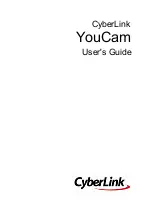
374
Chapter 17: Developing Globalized Applications
A
locale
identifies the exact language and cultural settings for a user. The locale controls how dates
and currencies are formatted, how to display time, and how to display numeric data. For example,
the locale English (US) determines that a currency value displays as:
$100,000.00
while a locale of Portuguese (Brazilian) displays the currency as:
R$ 100.000
In order to correctly display date, time, currency, and numeric data to your customers, you must
know the customer’s locale. For more information on locales, see
“Locales” on page 376
.
About character encodings
A
character encoding
maps each character in a character set to a numeric value that can be
represented by a computer. These numbers can be represented by a single byte or multiple bytes.
For example, the ASCII encoding uses seven bits to represent the Latin alphabet, punctuation,
and control characters.
You use Japanese encodings, such as Shift-JIS, EUC-JP, and ISO-2022-JP, to represent Japanese
text. These encodings can vary slightly, but they include a common set of approximately 10,000
characters used in Japanese.
The following terms apply to character encodings:
•
SBCS
Single-byte character set; a character set encoded in one byte per character, such as
ASCII or ISO 8859-1.
•
DBCS
Double-byte character set; a method of encoding a character set in no more than two
bytes, such as Shift-JIS. Many character encoding schemes that are referred to as double-byte,
including Shift-JIS, allow mixing of single-byte and double-byte encoded characters. Others,
such as UCS-2, use two bytes for all characters.
•
MBCS
Multiple-byte character set; a character set encoded with a variable number of bytes
per character, such as UTF-8.
The following table lists some common character encodings; however, there are many additional
character encodings that browsers and web servers support:
The World Wide Web Consortium maintains a list of all character encodings supported by the
Internet. You can find this information at www.w3.org/International/O-charset.html.
Encoding
Type
Description
ASCII
SBCS
7-bit encoding used by English and Indonesian Bahasa languages
Latin-1
(ISO 8859-1)
SBCS
8-bit encoding used for many Western European languages
Shift_JIS
DBCS
16-bit Japanese encoding (Note that you must use an underscore
character (_), not a hyphen (-) in the name in CFML attributes.)
EUC-KR
DBCS
16-bit Korean encoding
UCS-2
DBCS
Two-byte Unicode encoding
UTF-8
MBCS
Multibyte Unicode encoding. ASCII is 7-bit; non-ASCII characters used in
European and many Middle Eastern languages are two-byte; and most
Asian characters are three-byte
Summary of Contents for COLDFUSION MX 61-DEVELOPING COLDFUSION MX
Page 1: ...Developing ColdFusion MX Applications...
Page 22: ...22 Contents...
Page 38: ......
Page 52: ...52 Chapter 2 Elements of CFML...
Page 162: ......
Page 218: ...218 Chapter 10 Writing and Calling User Defined Functions...
Page 250: ...250 Chapter 11 Building and Using ColdFusion Components...
Page 264: ...264 Chapter 12 Building Custom CFXAPI Tags...
Page 266: ......
Page 314: ...314 Chapter 14 Handling Errors...
Page 344: ...344 Chapter 15 Using Persistent Data and Locking...
Page 349: ...About user security 349...
Page 357: ...Security scenarios 357...
Page 370: ...370 Chapter 16 Securing Applications...
Page 388: ...388 Chapter 17 Developing Globalized Applications...
Page 408: ...408 Chapter 18 Debugging and Troubleshooting Applications...
Page 410: ......
Page 426: ...426 Chapter 19 Introduction to Databases and SQL...
Page 476: ...476 Chapter 22 Using Query of Queries...
Page 534: ...534 Chapter 24 Building a Search Interface...
Page 556: ...556 Chapter 25 Using Verity Search Expressions...
Page 558: ......
Page 582: ...582 Chapter 26 Retrieving and Formatting Data...
Page 668: ......
Page 734: ...734 Chapter 32 Using Web Services...
Page 760: ...760 Chapter 33 Integrating J2EE and Java Elements in CFML Applications...
Page 786: ...786 Chapter 34 Integrating COM and CORBA Objects in CFML Applications...
Page 788: ......
















































